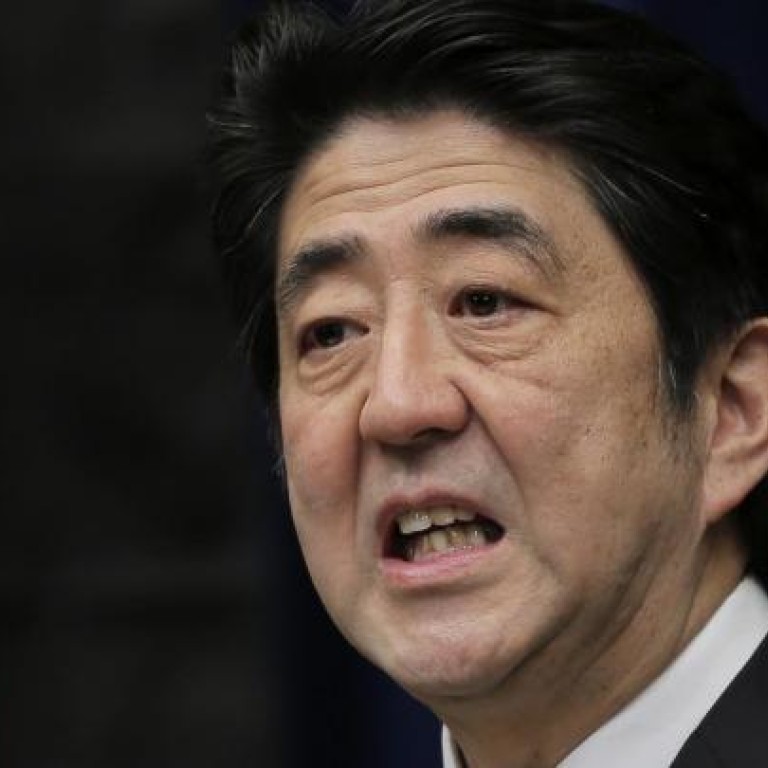
Beijing's island survey plan is a test for Shinzo Abe
China will look to see how Japanese leader reacts to presence of surveyors near islets
The announcement that Beijing plans to deploy surveying teams on the Japanese-controlled Senkaku Islands, which China calls the Diaoyu chain, has been dismissed in Japan as little more than an effort to test the response of the government of Prime Minister Shinzo Abe.
Li Pengde , the deputy director of the Chinese mapping agency, said on Tuesday that the government will dispatch a team of surveyors to carry out a thorough study of the disputed islands at an "appropriate time" and when "the survey team's physical safety can be assured".
Three Chinese maritime surveillance vessels approached the uninhabited islands on Tuesday, entering an area that Japan claims as its territorial waters. The 11th Regional Coast Guard Headquarters, in the Okinawa Prefecture city of Naha, said the intrusion by the Chinese vessels was the first since March 6 but the 33rd incident since Tokyo bought the islands from their private owners in September last year.
"China's basic strategy now is to try to irritate and intimidate Japan, putting pressure on the government to see how the Abe government reacts," said Go Ito, a professor of international relations at Tokyo's Meiji University.
China's basic strategy now is to try to irritate and intimidate Japan, putting pressure on the government to see how the Abe government reacts
"Beijing's tactic is to take three or four strides forward in its claims to the islands, and then one or two back, he said. "That does mean that they are gradually moving their claim forward, but I don't think they are ready to actually land surveyors on the islands to make maps."
The presence of Chinese vessels, and aircraft, in the vicinity is nevertheless keeping Japan's Coast Guard on its toes and there was concern in January when a Chinese ship was observed opening the doors to the hangar on the stern of the vessel. The fear was that a helicopter was being prepared for take off for the short hop to one of the islands, although nothing materialised.
Japan would vigorously oppose any attempt by China to get a team of surveyors onto the islands - a situation which raises the possibility of an accidental clash at sea leading to escalation on both sides. Should surveyors get ashore, however, Japan is expected to dispatch law enforcement officers to arrest them for trespassing.
Professor Ito believes that Japan has two options at that point. One would be to hold them briefly before returning them to China with no charges, a move designed to not further enflame the relationship with Beijing, although it might be perceived as a sign of weakness by the Chinese government.
The alternative would be to hold the surveyors for as long as it takes to file formal charges against them. This course of action might be required if the Chinese resist arrest and the Japanese officials are injured.
But Professor Ito agrees the second scenario is likely to trigger a repeat of the violent scenes that played out on the streets of dozens of Chinese cities last year after the Japanese government went ahead and purchased the islands.
A representative of the foreign ministry in Tokyo declined to comment on the actions that might be taken against anyone landing illegally on the islands, but expressed the government's determination to safeguard Japanese territory.
"The Senkaku Islands are an inherent part of the territory of Japan, in light of historical facts and based upon international law," the official said. "There is no need for China to carry out a measurement survey."
- Japan is deploy the first two of its next-generation maritime surveillance aircraft before the end of this month. Domestically developed by Kawasaki Heavy Industries, the P-1 jet will gradually replace the Maritime Self-Defence Force's ageing 80-strong fleet of P-3C patrol aircraft. The P-1 is faster than the P-3C and has a greater range, giving it an extended "loiter time" in sensitive areas.

